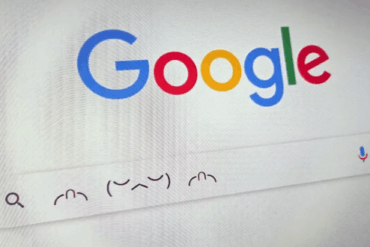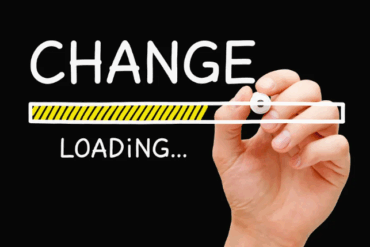By
The magazine publisher’s partnership with MRI-Simmons builds on the Meredith Sales Guarantee to track business outcomes
Ad Age spoke with Doug Olson, president of Meredith Magazines, to get some specifics on MAAG. At one point, Olson threw the mic, so to speak, to Catherine Levene, president of Meredith Digital, to answer questions about digital traffic; her response, which she supplied by email, appears at the end of this post.
The following has been lightly edited and condensed for publication.
Walk us through how the Meredith Audience Action Guarantee will work. What sorts of business outcomes are you tracking, and what external solutions are you deploying to monitor consumer actions?
We’re tracking the engagement of our readers through MRI-Simmons’ Starch AdMeasure, and measuring the specific number of readers who have taken an action as a result of seeing a brand campaign in our magazines. By “action,” we know if our readers have clipped an ad, visited a brand website, looked for more information, recommended the product, considered/purchased the product, and the like. For instance, the consumer may have talked to a doctor or taken a photo of a QR code or visited a social media site.
How does this build on what you’ve already been doing with the Meredith Sales Guarantee program?
At Meredith, we stand behind the power of our brands to drive action for our partners. That accountability was first established a decade ago when we introduced our Meredith Sales Guarantee, which proves that Meredith’s print, digital and video properties impact sales and deliver ROI. We’ve executed more than 200 successful campaigns.
If a given campaign doesn’t live up to the “action guarantee,” how do you compensate?
We’ll provide a “make good” in print.
Let’s talk for a moment about the Meredith magazine portfolio, which of course primarily targets a female audience. You’ve got a set of titles that are actually quite well-suited to self-quarantine and staying in. Better Homes & Gardens and Real Simple, for example, have always been about making the best of your home life.
We believe our brands’ focus on food, family, home and entertainment reflect consumers’ desire for normalcy and the kind of transportive experience they’re looking for during this time. From providing meditation/yoga guidance and other workout-from-home exercises, as seen in Health and Shape … to suggestions for getting dinner on the table from Allrecipes, Better Homes & Gardens and EatingWell … to sharing tips on cleaning and organizing your home from Real Simple, or how to set up a home office, as seen in Reveal’s current issue. Our brand content across platforms is resonant right now.
Now tell me how you’re dealing with consumers’ widespread lack of access to newsstands during lockdown. What’s your overall subscription/newsstand mix?
Meredith brands possess one of the highest direct-to-publisher rate bases in the industry. Our strong, longstanding relationships with more than 36 million subscribers allow us to enjoy an approximately 96 percent subscriber / 4 percent newsstand split, which insulates us from a downturn in newsstand sales.
So what have you seen at the newsstand?
We experienced an uptick at newsstand in the early days of this crisis, though mid-March, though the newsstand is currently soft and has been so during the past couple of weeks. For more context, the bulk of our brands’ newsstand sales are generated at major grocery chains, Walmart and Target, which remain open and are currently receiving considerable traffic. Though there’s no traffic at newsstands at airport terminals and at Barnes & Noble.
Are you sticking with your existing frequency schedule across your titles?
There’s currently no change in our publishing schedule. We continue to closely monitor the situation across our supply chain, including the paper and printing areas, and we fully expect to maintain our circulation rate base delivery.
There’s been a lot of coverage of how TV viewing is up during quarantine, which you’d totally expect, and is obviously good for Meredith’s TV stations. What about magazine readership?
We’re seeing increases in consumer engagement with our print editions as we track how the coronavirus is impacting women’s daily lives. Thirty-five percent of women are reading more magazines as a result of the coronavirus, according to data from our Meredith Consumer Pulse: COVID-19 tracking report.
NOTE: As mentioned above, in response to specific questions about Meredith’s digital traffic, Olson connected Ad Age with Catherine Levene, president of Meredith Digital, who emailed to say:
Our most recent estimates, as of Sunday, April 12, show that our April month-to-date traffic across the Meredith Digital network was up 40 percent year-over-year. Social alone was up 30 percent MTD. Video has also experienced a stellar month so far, up 150 percent YOY. The week that ended on Saturday, April 4, represented Meredith’s biggest week ever on YouTube, with more than 13.4 million views. March was the biggest month ever for our brands on YouTube, with over 46 million views across the portfolio.
We’re working together across disciplines to identify and address our consumers’ real issues and current needs. The data team is pulling real-time trends and predictive insights; the content team is leaning into those trends; and the growth team is driving traffic via search, social, email and browser notifications, and they are driving new emails sign-ups and membership. It’s the perfect circle.
Feature Image Credit: Credit: Meredith Corporation





